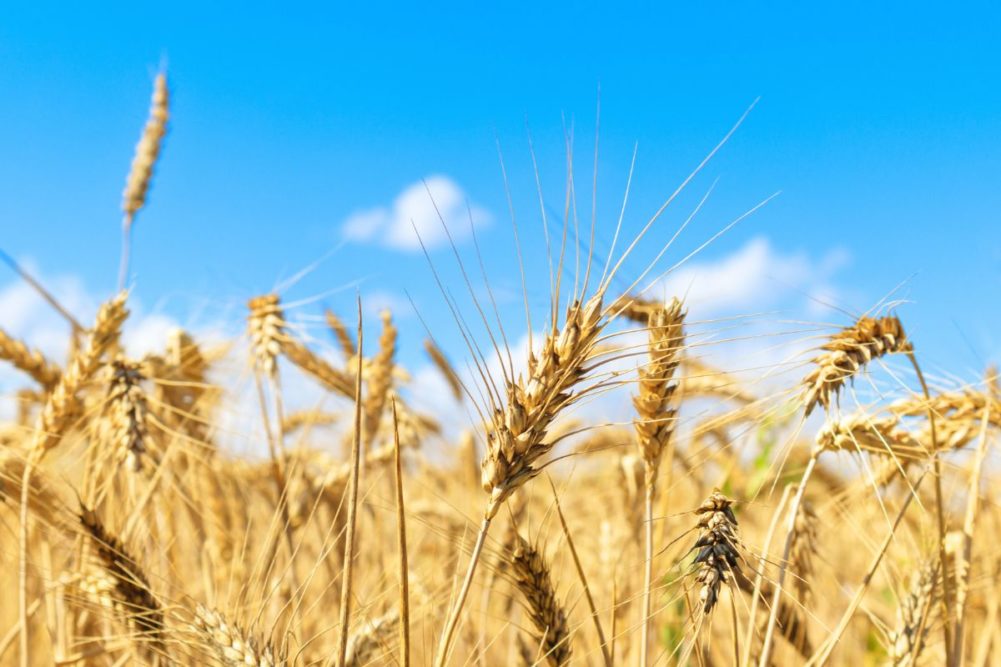KANSAS CITY, MISSOURI, US — Pasta manufacturers pondering their next forays into 2024 semolina coverage and looking to the recent past for guidance will find durum values lower than a year ago and down sharply from mid-December 2021.
US durum growers deciding when to loosen their grip on supplies in storage on northern Plains farms will encounter bids hovering about a $1 a bushel higher than the five-year average for the date.
Hard amber durum values quoted over the Chicago gateway for delivery beyond were steady at $12.75 a bushel at the end of 2022 and start of 2023. Prices dipped to a low this year of $10.95 a bushel on June 16 and rose to $14.50 per bushel in mid-August. The price dropped back to $12.75 from mid-November to early December. Durum began to drift lower again, to $12.50 per bushel, in the week ended Dec. 8, which compared with $13.25 a year earlier, $18.75 a bushel two years earlier and $8.35 per bushel on Dec. 11, 2020. The five-year average price for the date was $11.27 per bushel.
Most domestic durum mills were covered through March, some through April. A little under half of the 2023 crop was in storage on farms in strong hands.
The US Department of Agriculture in its Dec. 8 World Agricultural Supply and Demand Estimates report made no changes to its appraisal of the 2023 durum crop, including production at 64 million bushels, imports at 40 million (down 22% from 2022), exports at 25 million (up 9%) and carryover on June 1, 2024, at 17 million (down 39% from 2023). With 64 million bushels produced, 33.2 million, equating to 48% of production, were stored on farms as of Sept. 1, the USDA said in its Sept. 29 Grain Stocks report.
Commercial elevator bids to growers trended higher to about $9.50 a bushel in November before dropping back near $9 in early December. Neither adjustment had US durum farmers showing much inclination to part with supplies as durum values slid lower into mid-December.
“We’ll see how this plays out into 2024 because we’re headed back to a situation wondering when does the farmer flinch first,” a miller said. “It’s just a matter of time before the farmer will have to accept these values because everyone’s covered. At least one major grain company is short and might start to pay for durum. Most farmers can probably hold out through January-February and then find some time on his hands, and the ground frozen enough to drive over it and deliver some bushels.”
Durum markets were mostly quiet through the fall. Prices were lower in the absence of fresh news. Tunisia tendered internationally four times in the fourth quarter and purchased relatively small volumes in private sales thought to be sourced from Italy and Canada.
Algeria bought between 450,000 and 500,000 tonnes of durum on Dec. 6 in private sales thought to be sourced from Canada, Australia, Mexico and, some sources said, the United States. Market participants hoped Algeria’s trade would add definition to global and US durum prices since the country typically buys large amounts.
Algeria’s purchase was thought to have covered only through February, so another international tender was expected to cover March and April 2024, a miller said. At that point, the Mexican durum crop was expected to come online and supply export needs during the early summer.
Perhaps the biggest surprise to the trade was the sheer volume of durum Turkey made available for export this year.
“US traders, European traders, nobody expected that,” a miller said. “That provided a lot of extra durum to the market and pretty much filled the entire hole left by Canada’s lower production.”
Four months before the typical window for seeding the US crop opens, soil moisture conditions were in much better shape than a year earlier. The USDA, after reviewing the Dec. 5 US Drought Monitor, said 10% of US durum areas were in drought. In North Dakota, 5% of durum production area was in drought. A year earlier, 90% of US durum producing areas were in drought, including 97% in North Dakota and 95% in Montana.
Estimated semolina coverage taken by pasta makers was above 95% for the first quarter of 2024. Second-quarter coverage ranged widely from 50% to 70%. For the third quarter, some millers said up to 10% of anticipated semolina needs had been locked in while others had no sales on the books for the period.





